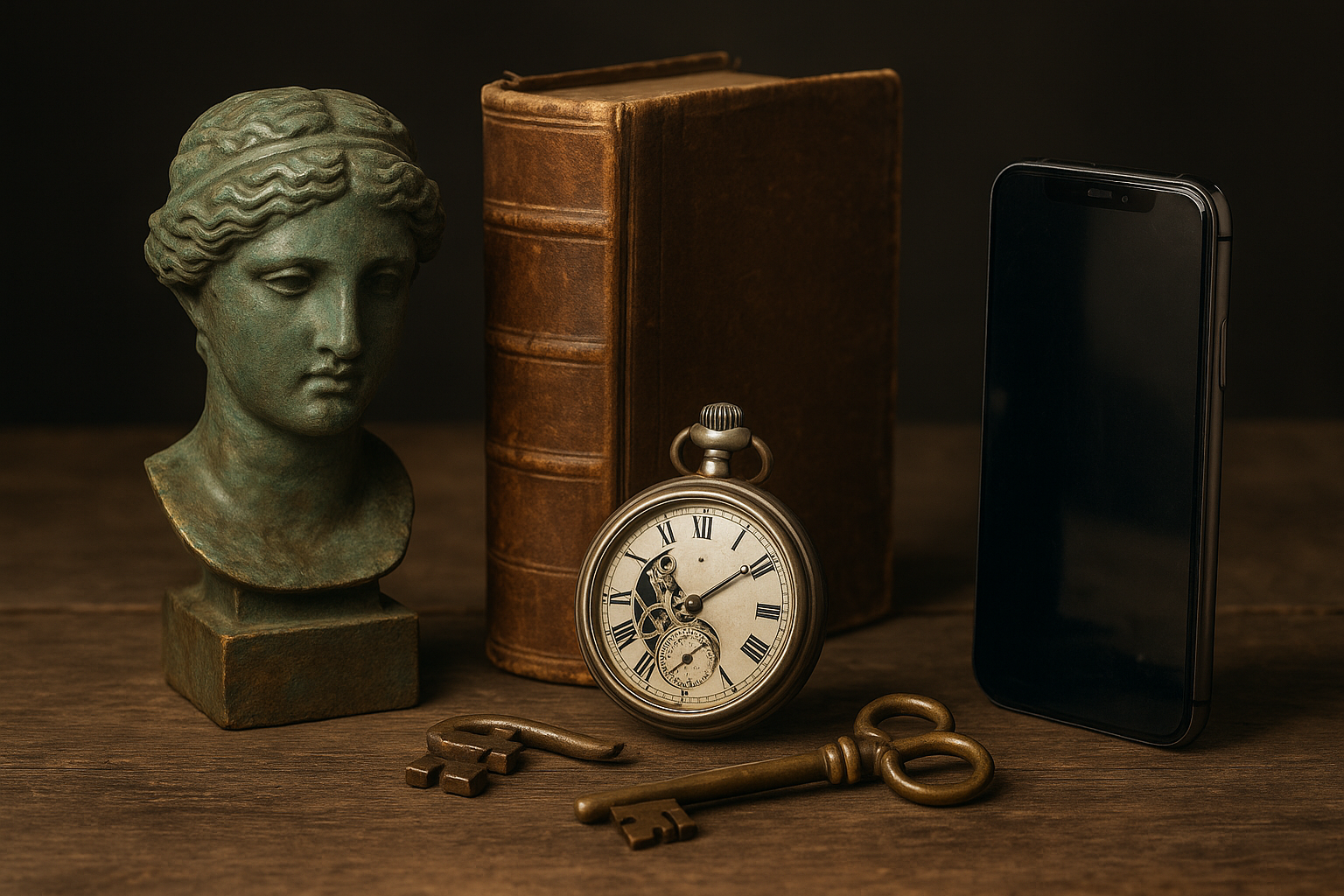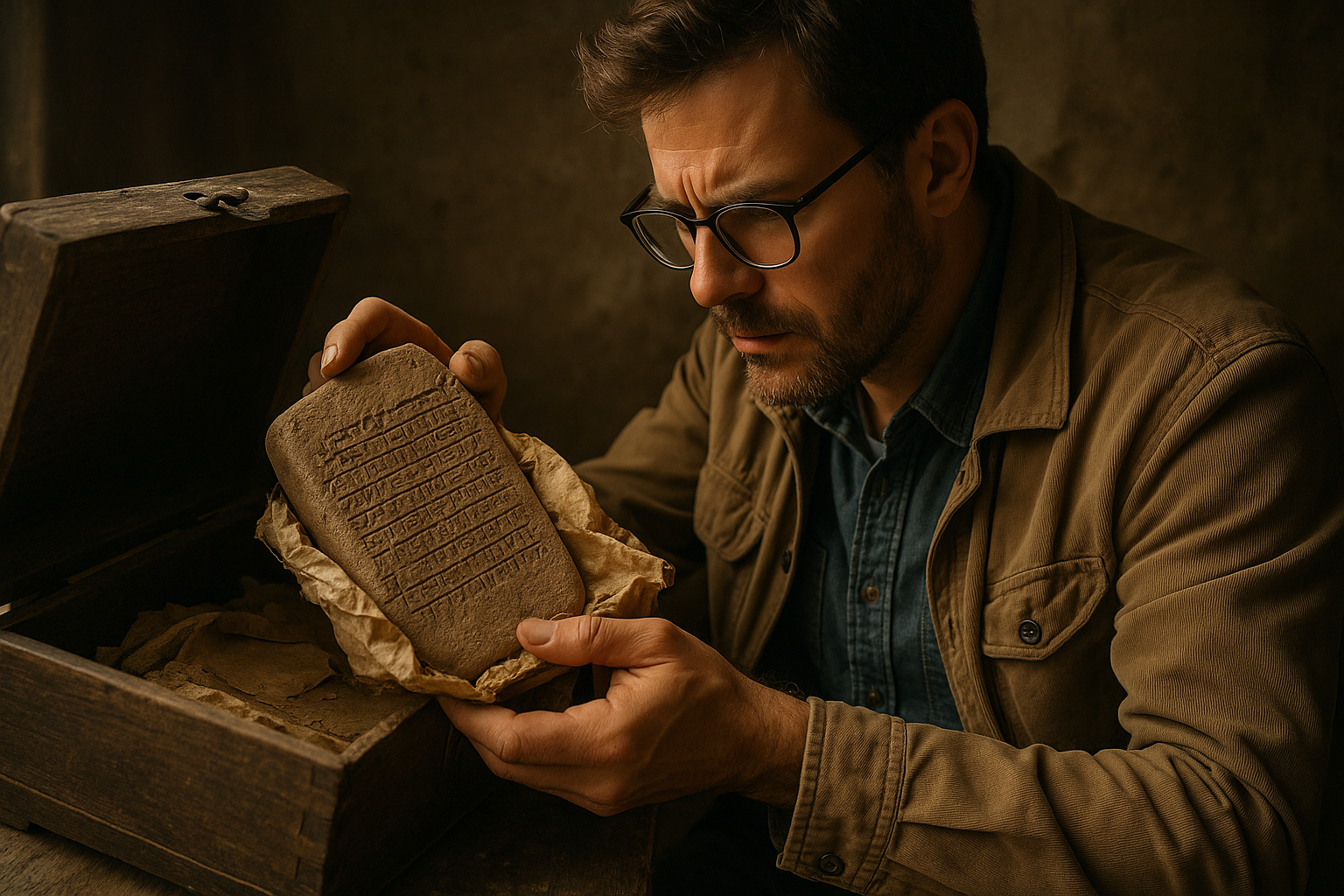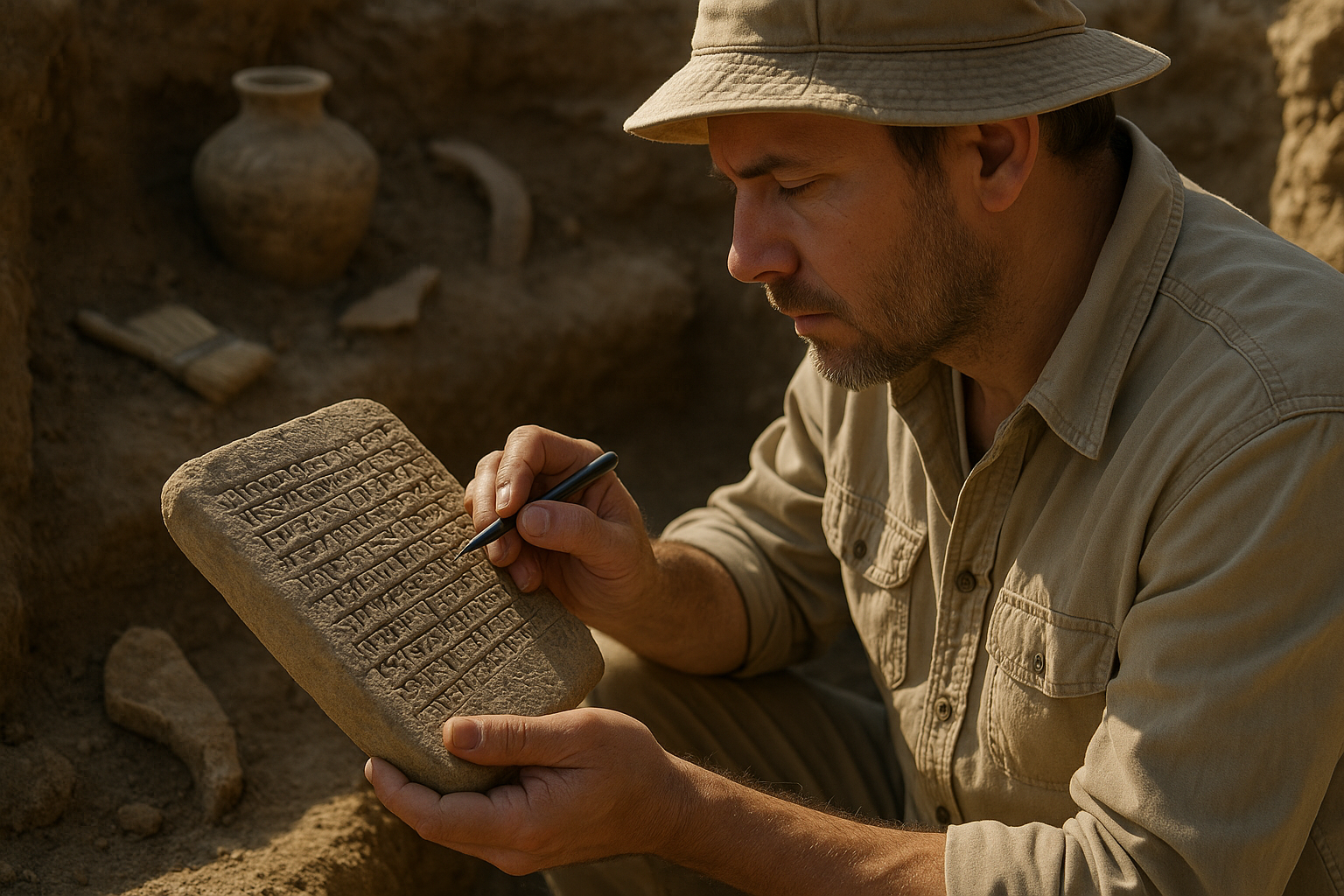Artifacts serve as silent witnesses to humanity’s journey, holding stories that transcend time and connect generations across millennia, shaping our understanding of who we are.
🏺 The Eternal Voice of Ancient Objects
Every artifact carries within it a narrative waiting to be discovered. From pottery shards found in archaeological digs to carefully preserved manuscripts in museum vaults, these physical remnants of human activity speak a language that bridges temporal divides. They are not merely old objects; they are tangible connections to thoughts, emotions, and experiences of people who lived centuries or even millennia ago.
The power of artifacts lies in their authenticity. Unlike written histories that may be subject to bias or interpretation, physical objects offer direct evidence of past civilizations. A bronze tool reveals technological advancement, a piece of jewelry demonstrates aesthetic preferences, and ancient coins illustrate economic systems. Each item serves as a primary source document, frozen in time yet perpetually relevant.
Museums worldwide house millions of these timeless treasures, carefully catalogued and preserved for future generations. The British Museum, the Louvre, the Smithsonian, and countless other institutions act as guardians of human heritage. Their collections represent diverse cultures, time periods, and geographical locations, offering visitors the opportunity to witness firsthand the material evidence of human creativity and ingenuity.
🔍 Decoding the Messages Within
Archaeologists and historians dedicate their lives to extracting meaning from artifacts. The process of archaeological investigation involves meticulous excavation, documentation, and analysis. Each discovery, regardless of how small or seemingly insignificant, contributes to our broader understanding of historical contexts.
Modern technology has revolutionized how we study ancient objects. Carbon dating allows scientists to determine the age of organic materials with remarkable precision. X-ray fluorescence spectroscopy reveals the chemical composition of metals and pigments. Three-dimensional scanning creates digital replicas that researchers worldwide can study without risking damage to fragile originals.
These analytical techniques have solved mysteries that puzzled scholars for generations. They have revealed hidden inscriptions beneath layers of patina, identified the geographical origins of raw materials used in construction, and even uncovered evidence of ancient trade networks that spanned continents.
The Language of Material Culture
Material culture studies examine how physical objects reflect social structures, beliefs, and daily practices. A simple clay pot, for instance, can reveal information about dietary habits, cooking methods, storage practices, and aesthetic preferences. The decoration on the pot might indicate religious beliefs or social status. The location where it was found provides clues about living arrangements and community organization.
Pottery is particularly valuable to archaeologists because it is both common and durable. Ancient civilizations produced vast quantities of ceramic vessels, and fragments survive in archaeological contexts where more perishable materials have long since decomposed. By studying pottery styles and manufacturing techniques, researchers can trace cultural influences, migration patterns, and chronological sequences.
💎 Icons That Shaped Civilizations
Certain artifacts achieve iconic status, becoming symbols of entire civilizations or historical periods. The Rosetta Stone, discovered in 1799, unlocked the mysteries of Egyptian hieroglyphics and opened the door to understanding thousands of years of pharaonic history. This single artifact transformed Egyptology from speculation to science.
The Terracotta Army, discovered in 1974 near Xi’an, China, consists of thousands of life-sized clay soldiers, horses, and chariots buried with China’s first emperor, Qin Shi Huang. This extraordinary archaeological find revealed the organizational capacity, artistic sophistication, and ideological beliefs of ancient China. Each warrior has unique facial features, demonstrating the remarkable craftsmanship of artisans over two millennia ago.
The Dead Sea Scrolls, found between 1947 and 1956 in caves near the Dead Sea, represent the oldest known manuscripts of biblical texts. These fragile parchment and papyrus documents have provided invaluable insights into religious thought, textual transmission, and daily life during the Second Temple period of Judaism.
Personal Treasures With Universal Meaning
Not all significant artifacts are grand monuments or elaborate treasures. Sometimes the most moving discoveries are personal items that humanize distant historical figures. A child’s toy found in Roman ruins, a love letter preserved in a medieval castle, or personal jewelry buried with its owner—these intimate objects create emotional connections across time.
The excavation of Pompeii and Herculaneum, cities buried by the eruption of Mount Vesuvius in 79 CE, preserved not only buildings and frescoes but also countless everyday objects. Loaves of bread, surgical instruments, writing tablets, and even fast-food establishments remain visible today, offering unprecedented insights into Roman daily life.
🌍 Cultural Heritage and Identity
Artifacts play a crucial role in maintaining cultural identity and continuity. Indigenous communities worldwide fight to preserve their material heritage and, increasingly, to reclaim artifacts removed during colonial periods. These objects are not merely historical curiosities; they are living connections to ancestral traditions, spiritual practices, and community identity.
The repatriation debate has become increasingly prominent in museum ethics discussions. Who owns cultural heritage? Should artifacts remain in major international museums where they are accessible to global audiences, or should they return to their countries or communities of origin? These questions have no simple answers, but they reflect growing recognition that artifacts carry political and emotional significance beyond their historical and aesthetic value.
Native American communities have successfully advocated for the return of sacred objects and ancestral remains under legislation like the Native American Graves Protection and Repatriation Act (NAGPRA). Similarly, African nations seek the return of artifacts taken during colonial rule, and Greece continues to request the return of the Parthenon Marbles from the British Museum.
🔬 Digital Preservation and Virtual Access
The digital revolution has transformed how we preserve, study, and share artifacts. High-resolution photography, 3D scanning, and virtual reality technologies create detailed digital replicas that can be studied, shared, and experienced globally without physical travel. These technologies democratize access to cultural heritage, allowing students and researchers anywhere to examine objects once accessible only to privileged few.
Digital archives preserve artifacts against natural disasters, conflict, and deterioration. When ISIS destroyed ancient sites in Syria and Iraq, digital records became invaluable resources for potential reconstruction efforts. Organizations like CyArk use laser scanning to create detailed three-dimensional records of endangered cultural heritage sites worldwide.
Virtual museums and online collections have exploded in recent years, accelerated by the COVID-19 pandemic. Institutions like the Smithsonian, the Metropolitan Museum of Art, and the British Museum offer extensive online collections with high-quality images and detailed information. These platforms reach audiences far beyond physical visitors, extending educational impact exponentially.
Interactive Technologies Bringing Artifacts to Life
Augmented reality applications allow users to visualize how artifacts appeared in their original contexts. Visitors can point smartphones at museum displays and see reconstructions of how buildings looked when newly constructed, how statues appeared with their original paint, or how tools were used in daily activities.
Educational apps help students engage with historical artifacts in interactive ways, connecting classroom learning with tangible historical evidence. These technologies are particularly effective for younger generations who have grown up with digital interfaces and expect interactive experiences.
⚖️ Conservation Challenges and Ethical Responsibilities
Preserving artifacts for future generations presents significant challenges. Environmental factors like temperature, humidity, light exposure, and air quality can cause irreversible damage to fragile materials. Conservators must balance preservation needs with public access, ensuring that artifacts remain available for study and exhibition while protecting them from deterioration.
Some materials are inherently unstable. Organic materials like textiles, leather, and paper are particularly vulnerable. Metal objects may corrode, stone can erode, and even seemingly stable materials like ceramic can suffer from salt crystallization or structural weaknesses.
Modern conservation science employs sophisticated techniques to stabilize and preserve artifacts. Climate-controlled storage facilities maintain optimal environmental conditions. Specialized lighting systems minimize damage from ultraviolet radiation. Inert materials prevent chemical reactions that could damage objects. Conservators receive extensive training in chemistry, materials science, and art history to make informed decisions about treatment approaches.
The Ethics of Restoration
How much restoration is appropriate? This question generates ongoing debate within the conservation community. Some argue for minimal intervention, preserving artifacts exactly as found, including damage and deterioration. Others advocate for more extensive restoration to help viewers appreciate the object’s original appearance and function.
The Sistine Chapel ceiling restoration, completed in the 1990s, generated controversy when centuries of dirt and darkened varnish were removed, revealing brilliant colors that many viewers found jarring. Critics worried that overzealous cleaning had removed original glazes applied by Michelangelo himself, while supporters argued that the restoration revealed the artist’s true intentions.
🎨 Artifacts as Inspiration for Contemporary Creation
Ancient artifacts continue to inspire contemporary artists, designers, and creators. Fashion designers reference historical costume and jewelry in modern collections. Architects study ancient building techniques and proportions. Graphic designers draw inspiration from historical typography and decorative motifs.
This creative dialogue between past and present enriches both historical understanding and contemporary culture. When a modern designer incorporates ancient patterns into new work, those historical forms gain renewed relevance and visibility. Simultaneously, contemporary interpretations can illuminate aspects of ancient artifacts that might otherwise go unnoticed.
Museums increasingly recognize their role not just as guardians of the past but as inspirations for the future. Many institutions now include contemporary art galleries alongside historical collections, explicitly drawing connections between ancient creativity and modern innovation. Artist residency programs invite contemporary creators to engage deeply with historical collections, producing new works informed by intensive study of artifacts.
📚 Educational Power of Tangible History
Artifacts possess unique educational value. Students who handle replica artifacts or view original objects develop deeper understanding than those who only read textbook descriptions. Physical engagement activates different cognitive processes, creating stronger memory formation and emotional connections to historical content.
Educational programs that incorporate artifacts demonstrate consistently superior learning outcomes. Students who participate in hands-on archaeology programs, museum visits, or artifact-based classroom activities show increased interest in history and improved critical thinking skills. These programs teach students to ask questions, make observations, develop hypotheses, and think analytically about evidence.
Schools increasingly recognize the value of partnering with museums and cultural institutions. Mobile museum programs bring artifacts and educators directly to classrooms. Digital lending libraries provide high-quality reproductions for classroom use. Virtual field trips connect students with museum curators and conservators, offering behind-the-scenes access to collections and professional expertise.
🌟 Looking Forward: Artifacts of Today
What objects from our contemporary world will future archaeologists study? This question invites reflection on what we value and what will survive. Digital technologies dominate modern life, but unlike pottery and stone tools, electronic devices may not endure for millennia. Will future scholars understand our civilization through the few physical objects we still produce?
Some organizations have begun creating time capsules and intentional archaeological deposits, selecting objects they believe represent contemporary culture. These efforts raise fascinating questions about how we want to be remembered and what we consider significant about our own time.
Environmental challenges add urgency to preservation discussions. Climate change threatens archaeological sites through rising sea levels, increased erosion, and extreme weather events. Cultural heritage in conflict zones faces deliberate destruction. These losses are irreversible, making current preservation efforts increasingly critical.
The Responsibility of Stewardship
Every generation inherits artifacts from previous eras and bears responsibility for protecting them for future generations. This stewardship responsibility extends beyond museum professionals to include everyone. Individual choices about supporting cultural institutions, respecting heritage sites, and advocating for preservation policies collectively determine what survives.
Governments play crucial roles through legislation protecting archaeological sites, funding for museums and conservation, and international agreements preventing illicit trafficking in cultural property. UNESCO’s World Heritage program identifies sites of outstanding universal value and provides frameworks for protection and management.

✨ The Timeless Dialogue Continues
Artifacts connect us to our shared human heritage, reminding us that despite technological advances and cultural differences, fundamental human experiences remain constant across time. People throughout history have loved and grieved, created beauty, sought meaning, organized societies, and attempted to leave legacies for future generations.
These physical remnants of past lives invite contemplation about continuity and change, about what endures and what fades, about human creativity and resilience. They challenge us to consider our place in the long arc of human history and our responsibilities to both past and future.
As we navigate an increasingly digital world, artifacts ground us in physical reality and historical continuity. They offer counterbalance to the ephemeral nature of modern digital communication, reminding us of the value of lasting, tangible creations. In museums, archaeological sites, and private collections worldwide, timeless treasures continue their quiet work of bridging past, present, and future, connecting all of humanity across the expanses of time.
Toni Santos is a temporal researcher and symbolic archaeologist specializing in the study of forgotten burial systems, sacred archival practices, and the visual languages embedded in ancient temporal lore. Through an interdisciplinary and artifact-focused lens, Toni investigates how humanity has encoded knowledge, memory, and mystery into the temporal world — across cultures, rituals, and vanished civilizations. His work is grounded in a fascination with time capsules not only as vessels, but as carriers of hidden meaning. From extinct burial ritual practices to mythical codices and secret temporal seals, Toni uncovers the visual and symbolic tools through which cultures preserved their relationship with the temporal unknown. With a background in design semiotics and temporal artifact history, Toni blends visual analysis with archival research to reveal how time capsules were used to shape identity, transmit memory, and encode sacred knowledge. As the creative mind behind eltonxy, Toni curates illustrated chronologies, speculative temporal studies, and symbolic interpretations that revive the deep cultural ties between artifacts, ritual markings, and forgotten messages. His work is a tribute to: The lost temporal wisdom of Forgotten Time Capsule Burial Rituals The guarded archives of Sacred Codices and Forgotten Temporal Archives The mythopoetic presence of Temporal Symbols and Ritual Markings The layered visual language of Vanished Artifacts and Temporal Messages Whether you're a temporal historian, symbolic researcher, or curious gatherer of forgotten chronological wisdom, Toni invites you to explore the hidden roots of time capsule knowledge — one seal, one glyph, one message at a time.




